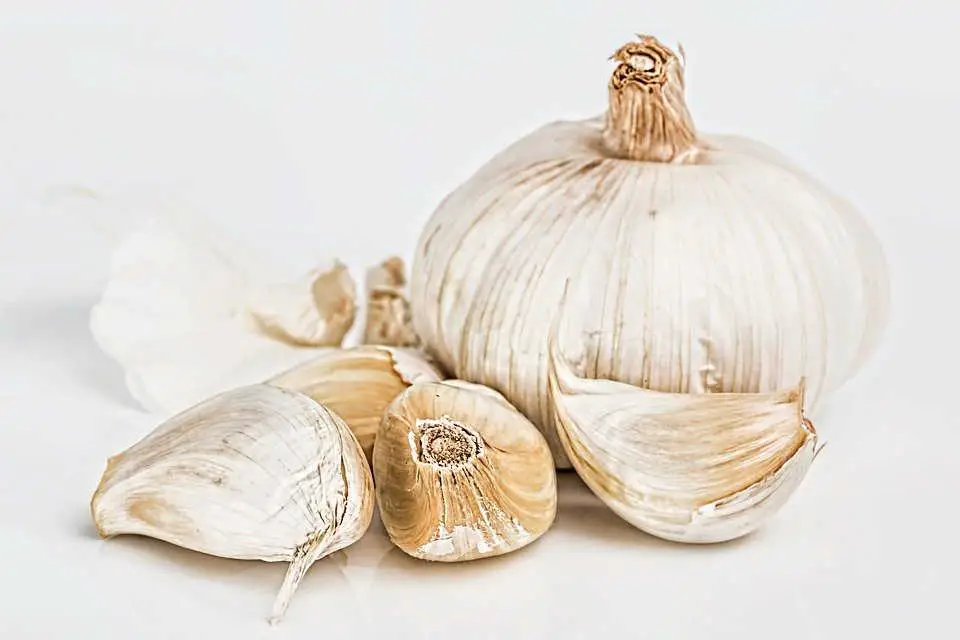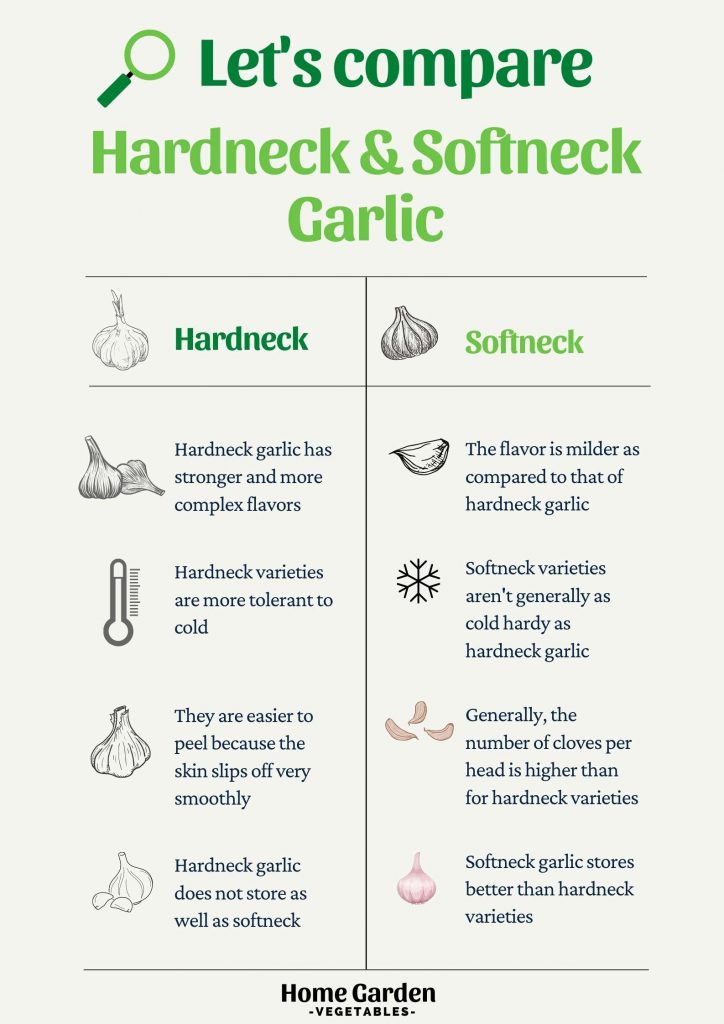There are hundreds of different garlic varieties, but not each one is adapted to thrive in your region. The different types will also have slight variations in their appearance, taste, and storage. Two standard terms that you’ll often come across when hunting for garlic varieties are hardneck and softneck.
All garlic varieties can be categorized under hardneck and softneck garlic. These two broad classifications have some notable differences in their preferred growing conditions, besides their appearance, size, and storage.
Reader Poll: What online courses would interest you?
A gardener must understand these differences well enough to choose the suitable variety of garlic, grow them optimally and store them correctly to make the most out of their harvest. Continue reading, and you’ll find all about growing hardneck vs softneck garlic.

What’s In The Neck?
The fundamental difference between hardneck and softneck garlic comes from the “neck” of the garlic. The neck is the flower stalk that runs through the garlic bulb’s center, separating the individual cloves. The garlic you buy at stores is trimmed, so you don’t see the whole long stalks, but a short portion of the papery tuft is usually still attached.
It’s the differences in the type of these stalks that the categorization between hardneck and softneck originates from. Hardneck garlic has a flower stalk that extends from the bulb itself and turns hard at maturity. In contrast, the ‘neck’ or stalk of softneck garlic originates from the leaves and stays soft even when garlic reaches maturity.
Subscribe to our newsletter!
Distinguishing Features Of Hardneck Garlic

Hardneck garlic (Allium sativum var. ophioscorodon) is sometimes called top-setting garlic and forms a tough flowering stalk that you can easily spot running down the bulb center when you separate the cloves. Here are some of the features worth noting in comparison to softneck varieties:
- Hardneck garlic has stronger and more complex flavors that reflect the region’s soil and climate.
- Hardneck varieties are more tolerant to cold and grow better in cooler regions. They are a preferred choice of northern gardeners.
- They are easier to peel because the skin slips off very smoothly, revealing the cloves within.
- The cloves are larger in hardneck varieties, but you’ll typically find fewer cloves in each head than in softneck garlic. The cloves are arranged neatly in a single row around the rigid stalk. The arrangement isn’t as organized for softneck garlic.
- Hardneck garlic does not store as well as softneck. They have a shelf-life of 4 to 6 months from the date of harvest.
Hardneck Garlic Varieties
All hardneck cultivars fall into 9 further categories:
- Rocamboles
- Purple-stripe
- Porcelain
- Turban
- Asiatic
- Creole
- Middle Eastern
- Glazed purple stripe
- Marbled purple stripe
Distinguishing Features Of Softneck Garlic

Softneck garlic (Allium sativum var. sativum), also known as artichoke garlic, does not produce a flower scape. After they are cured, the center stalk becomes very soft and can be used to braid the garlic bulbs together for storage. Most of the garlic varieties you find in grocery stores are softneck garlic.
- The flavor is milder as compared to that of hardneck garlic.
- Softneck varieties aren’t generally as cold hardy as hardneck garlic and are preferred for regions where the winters are milder.
- The cloves’ arrangement isn’t as organized as it with hardneck garlic, and the individual cloves from a single head may vary in size. Generally, the number of cloves per head is higher than for hardneck varieties, but the cloves’ sizes are smaller. However, the number of cloves and their sizes will also depend on the climate. You’ll find a better development of bulbs, with bigger and more cloves in softneck garlic when grown in warmer climates than those growing in cooler regions.
- The softer, flexible stalks make them a better choice for braiding.
- Softneck garlic stores better than hardneck varieties, making them a preferred option in commercial cultivation. They can be stored for up to 9 to 12 months from the date of harvest.
- They typically mature faster than hardneck garlic.
Softneck Garlic Varieties
While there are dozens of hardneck varieties, only a few named softneck varieties are commonly grown. Here are some popular ones:
- California White
- Inchelium Red
- Lorz Italian
- Silver White
- Silver Rose
- Nootka Rose
Growing Hardneck VS Softneck Garlic Garlic

If you live in a northern zone, hardneck garlic is a good choice, while for warmer zones, you’ll have better luck at growing softneck garlic. In transitional zones with moderate climates, you can expect good results with either type of garlic. The best option is to grow both types and explore what thrives best in your climate and soil.
Though hardneck garlic produces the biggest bulbs in regions where winters are cold, they’ll also grow in warmer zones, but the bulbs will be smaller. Gardeners often cut off the long flower scapes on hardneck garlic once they begin to curl to help improve the yield. If allowed to grow, these scapes pull the energy from the plant that would otherwise go into the bulb development.
Softneck garlic doesn’t produce a flower scape, which might be why they deliver more cloves and mature faster than hardneck garlic. Since there are no flower scapes to worry about in these varieties, you won’t need to cut off anything.
Other than this, the planting technique is the same for both varieties. Plant them in the fall, about 3 inches deep and 6 inches apart, to harvest them in late spring to summers, once the leaves start turning yellow and dry.
Conclusion
So you’ve learned all about growing hardneck vs softneck garlic. Consider your climate, taste preferences, and how long you plan to store them before you make your pick. Alternatively, plant some of each type to enjoy the best of both!

